-
 Bitcoin
Bitcoin $94,769.9267
-0.20% -
 Ethereum
Ethereum $1,801.4941
-1.59% -
 Tether USDt
Tether USDt $1.0002
0.00% -
 XRP
XRP $2.2294
-2.63% -
 BNB
BNB $603.3201
-0.60% -
 Solana
Solana $147.2430
-1.18% -
 USDC
USDC $1.0000
-0.01% -
 Dogecoin
Dogecoin $0.1750
-2.28% -
 Cardano
Cardano $0.6977
-2.26% -
 TRON
TRON $0.2450
-1.02% -
 Sui
Sui $3.5286
-1.32% -
 Chainlink
Chainlink $14.5530
-3.64% -
 Avalanche
Avalanche $21.5469
-2.89% -
 Stellar
Stellar $0.2783
-0.82% -
 UNUS SED LEO
UNUS SED LEO $9.0448
1.05% -
 Toncoin
Toncoin $3.2299
-0.94% -
 Shiba Inu
Shiba Inu $0.0...01338
-2.41% -
 Hedera
Hedera $0.1861
-1.70% -
 Bitcoin Cash
Bitcoin Cash $365.2179
-2.05% -
 Polkadot
Polkadot $4.1233
-3.62% -
 Litecoin
Litecoin $84.7006
-1.70% -
 Hyperliquid
Hyperliquid $18.5131
-2.05% -
 Dai
Dai $1.0001
0.01% -
 Bitget Token
Bitget Token $4.3882
-0.55% -
 Monero
Monero $276.8541
-0.04% -
 Ethena USDe
Ethena USDe $0.9996
0.00% -
 Pi
Pi $0.5752
-0.16% -
 Pepe
Pepe $0.0...08901
-1.26% -
 Uniswap
Uniswap $5.3281
-2.79% -
 Aptos
Aptos $5.3996
-3.61%
Blockchain wallet usdt address
Blockchain Wallet USDT Addresses: Understanding how to view, use, and protect your USDT wallet addresses is crucial for safe and efficient cryptocurrency transactions.
Dec 19, 2024 at 12:06 pm
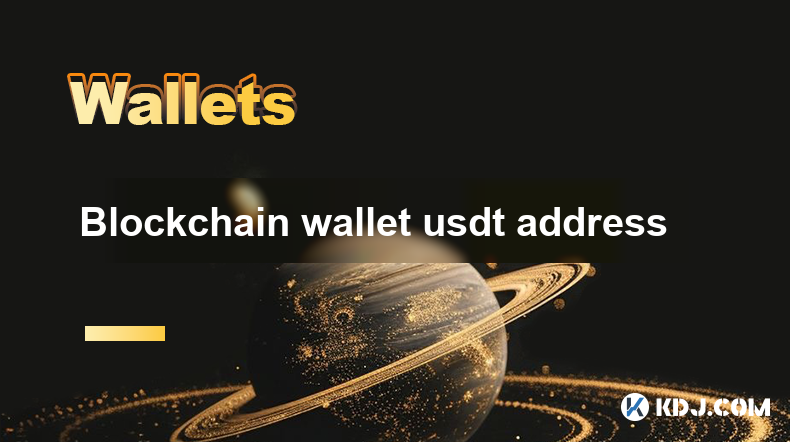
Key Points:
- Understanding Blockchain Wallet USDT Addresses
- Viewing USDT Addresses in Different Types of Wallets
- Sending and Receiving USDT Using Addresses
- Security Measures for Protecting USDT Addresses
- Common Questions and Answers
Blockchain Wallet USDT Address
A cryptocurrency wallet is a digital wallet used to store, send, and receive cryptocurrencies. It consists of two main components: a public address and a private key. The public address is a unique identifier that represents the wallet on the blockchain and is used to receive cryptocurrencies. On the other hand, the private key is used to access and spend the funds stored in the wallet.
A USDT wallet address is a specific type of public address associated with a blockchain wallet used to store and transact Tether (USDT), a popular stablecoin pegged to the US dollar. USDT is widely used in the cryptocurrency market as a stable store of value and for trading other cryptocurrencies.
Viewing USDT Addresses in Different Types of Wallets
Different types of wallets, such as software wallets, hardware wallets, and exchange-based wallets, may display USDT addresses differently. Here's how to view USDT addresses in common wallet types:
- Software Wallets (e.g., Trust Wallet, MetaMask): Software wallets typically display USDT addresses in the form of a long string of hexadecimal characters (e.g., 0x28C6c06298d514db089934071355E149a7B82845). These addresses can be copied and shared with others to receive USDT.
- Hardware Wallets (e.g., Ledger, Trezor): Hardware wallets are physical devices that store private keys offline, providing enhanced security. USDT addresses on hardware wallets are typically displayed on the device's screen or can be retrieved using the wallet's companion app.
- Exchange-Based Wallets (e.g., Binance, Coinbase): Cryptocurrency exchanges often provide their own wallets for users to store and trade cryptocurrencies. USDT addresses on exchange-based wallets are usually generated automatically and can be viewed in the exchange's interface.
Sending and Receiving USDT Using Addresses
To send or receive USDT, you will need to use the USDT address associated with your wallet. Here's how to send and receive USDT using addresses:
- Sending USDT: To send USDT, specify the USDT address of the recipient, enter the amount you wish to send, and initiate the transaction. The transaction will be processed by the blockchain network, and once confirmed, the USDT will be transferred to the recipient's address.
- Receiving USDT: To receive USDT, simply provide the USDT address associated with your wallet to the sender. Once the transaction is initiated and confirmed on the blockchain, the USDT will be credited to your wallet's address.
Security Measures for Protecting USDT Addresses
Protecting your USDT addresses is crucial for securing your funds. Here are some important security measures to follow:
- Keep Your Private Key Secure: The private key associated with your USDT address is vital for accessing and spending your funds. Protect your private key by storing it offline or using a hardware wallet to keep it away from potential online threats.
- Use Strong Passwords: Use complex passwords for your wallet accounts and change them regularly. Avoid using the same password for multiple accounts.
- Beware of Phishing Attempts: Phishing scams often target cryptocurrency users by sending emails or messages that appear to come from legitimate companies. Be cautious of any suspicious emails or messages requesting sensitive information or asking you to click on unfamiliar links.
- Enable Two-Factor Authentication: Two-factor authentication (2FA) adds an extra layer of security to your wallet by requiring additional verification methods when accessing your account.
- Consider Multi-Signature Wallets: Multi-signature wallets require multiple private keys to authorize transactions, providing enhanced security against unauthorized access.
FAQs
- What is the format of a USDT address? USDT addresses are typically long strings of hexadecimal characters (e.g., 0x28C6c06298d514db089934071355E149a7B82845).
- How do I generate a USDT address? USDT addresses are generated automatically when you create a cryptocurrency wallet.
- Can I change my USDT address? In most cases, it is not possible to change your USDT address.
- Can I use the same USDT address to send and receive transactions? Yes, you can use the same USDT address for both sending and receiving transactions.
- Is it safe to share my USDT address with others? Sharing your USDT address is generally safe, but it is important to be aware of phishing scams and protect your private key.
Disclaimer:info@kdj.com
The information provided is not trading advice. kdj.com does not assume any responsibility for any investments made based on the information provided in this article. Cryptocurrencies are highly volatile and it is highly recommended that you invest with caution after thorough research!
If you believe that the content used on this website infringes your copyright, please contact us immediately (info@kdj.com) and we will delete it promptly.
- PayPal (PYPL) Commits to Boosting Cryptocurrency Adoption, With Emphasis on USD PYUSD/USD Stablecoin
- 2025-04-30 18:15:13
- Get 150 spins by redeeming Coin Master links on April 30, 2025
- 2025-04-30 18:15:13
- Bitcoin (BTC) Price Analysis: Maintaining Its Position Near the $95K Mark Despite Recent Market Fluctuations
- 2025-04-30 18:10:13
- The Top 5 Best Metaverse Coins for 2025
- 2025-04-30 18:10:13
- El Salvador Is Still Buying Bitcoin Despite IMF Loan Agreement That Urged the Country to Scale Back Crypto Purchases
- 2025-04-30 18:05:13
- JasmyCoin (JASMY) Price Prediction for May 2024: Can JASMY Triple Its Value This Month?
- 2025-04-30 18:05:13
Related knowledge
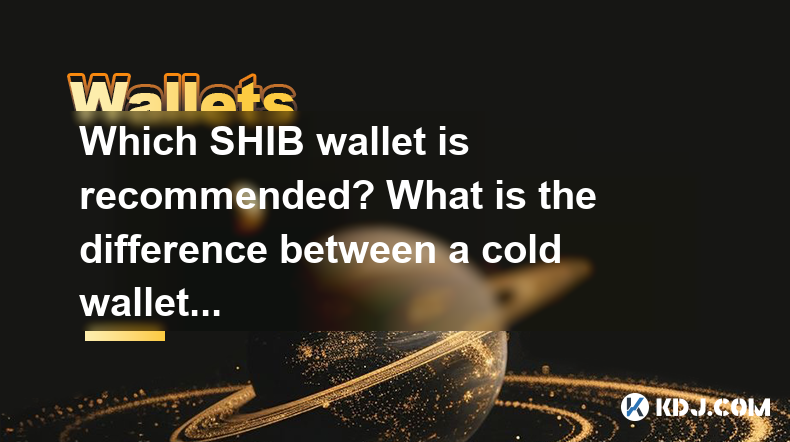
Which SHIB wallet is recommended? What is the difference between a cold wallet and a hot wallet?
Apr 29,2025 at 07:42pm
When it comes to storing your Shiba Inu (SHIB) tokens, choosing the right wallet is crucial for the security and management of your digital assets. In the cryptocurrency world, wallets are categorized into two main types: cold wallets and hot wallets. This article will explore the recommended SHIB wallets and delve into the differences between cold and ...

How to store AVAX safely after purchase? Which is better, cold wallet or hot wallet?
Apr 28,2025 at 09:28pm
When you purchase AVAX, the native cryptocurrency of the Avalanche network, ensuring its safe storage is crucial. The choice between a cold wallet and a hot wallet depends on your specific needs, such as security, convenience, and frequency of transactions. In this article, we will explore both options in detail, helping you make an informed decision on...

What to do if LINK wallet transfer fails? FAQ
Apr 29,2025 at 06:08pm
If you encounter a LINK wallet transfer failure, it can be a frustrating experience. However, there are several steps you can take to diagnose and resolve the issue. LINK, or Chainlink, is a decentralized oracle network that provides real-world data to smart contracts on the blockchain. Ensuring that your LINK transfers go smoothly is crucial for partic...
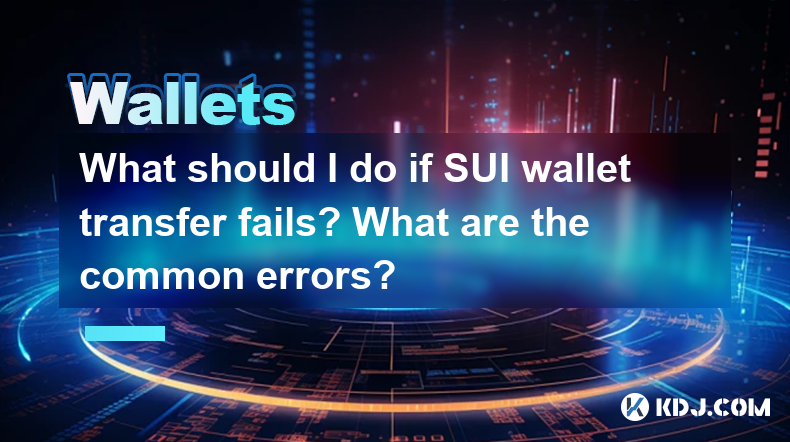
What should I do if SUI wallet transfer fails? What are the common errors?
Apr 29,2025 at 01:14am
If you are experiencing issues with SUI wallet transfers, it can be frustrating and confusing. This article will guide you through the common errors that may occur during a SUI wallet transfer and provide detailed steps on how to troubleshoot and resolve these issues. Understanding Common SUI Wallet Transfer ErrorsSUI wallet transfer failures can stem f...
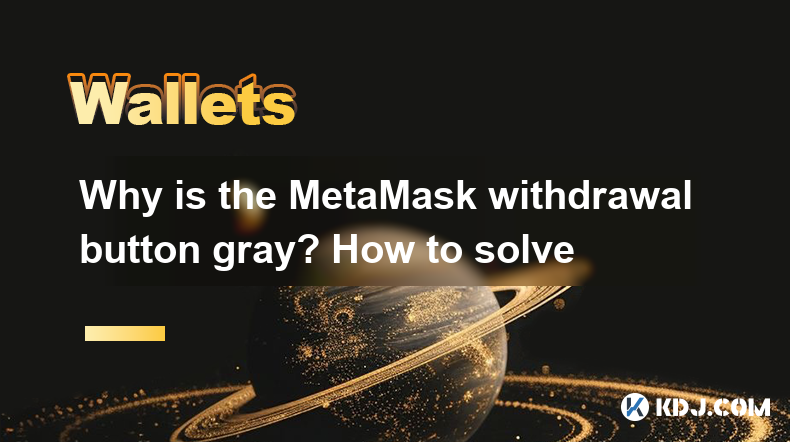
Why is the MetaMask withdrawal button gray? How to solve
Apr 28,2025 at 10:07am
When users encounter a grayed-out withdrawal button on MetaMask, it can be a source of frustration and confusion. Understanding why this happens and how to solve it is crucial for smooth transactions. The grayed-out withdrawal button typically indicates that certain conditions are not met, preventing the user from proceeding with a withdrawal. This arti...
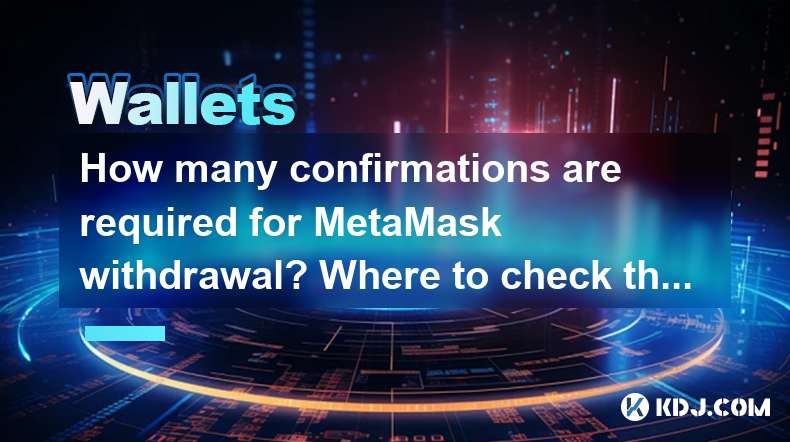
How many confirmations are required for MetaMask withdrawal? Where to check the progress
Apr 28,2025 at 05:49am
When using MetaMask to withdraw cryptocurrency, understanding the number of confirmations required and how to check the progress of your transactions is crucial for a smooth experience. Confirmations refer to the number of blocks added to the blockchain after the block containing your transaction, which helps to verify and secure the transaction. This a...

Which SHIB wallet is recommended? What is the difference between a cold wallet and a hot wallet?
Apr 29,2025 at 07:42pm
When it comes to storing your Shiba Inu (SHIB) tokens, choosing the right wallet is crucial for the security and management of your digital assets. In the cryptocurrency world, wallets are categorized into two main types: cold wallets and hot wallets. This article will explore the recommended SHIB wallets and delve into the differences between cold and ...

How to store AVAX safely after purchase? Which is better, cold wallet or hot wallet?
Apr 28,2025 at 09:28pm
When you purchase AVAX, the native cryptocurrency of the Avalanche network, ensuring its safe storage is crucial. The choice between a cold wallet and a hot wallet depends on your specific needs, such as security, convenience, and frequency of transactions. In this article, we will explore both options in detail, helping you make an informed decision on...

What to do if LINK wallet transfer fails? FAQ
Apr 29,2025 at 06:08pm
If you encounter a LINK wallet transfer failure, it can be a frustrating experience. However, there are several steps you can take to diagnose and resolve the issue. LINK, or Chainlink, is a decentralized oracle network that provides real-world data to smart contracts on the blockchain. Ensuring that your LINK transfers go smoothly is crucial for partic...

What should I do if SUI wallet transfer fails? What are the common errors?
Apr 29,2025 at 01:14am
If you are experiencing issues with SUI wallet transfers, it can be frustrating and confusing. This article will guide you through the common errors that may occur during a SUI wallet transfer and provide detailed steps on how to troubleshoot and resolve these issues. Understanding Common SUI Wallet Transfer ErrorsSUI wallet transfer failures can stem f...

Why is the MetaMask withdrawal button gray? How to solve
Apr 28,2025 at 10:07am
When users encounter a grayed-out withdrawal button on MetaMask, it can be a source of frustration and confusion. Understanding why this happens and how to solve it is crucial for smooth transactions. The grayed-out withdrawal button typically indicates that certain conditions are not met, preventing the user from proceeding with a withdrawal. This arti...

How many confirmations are required for MetaMask withdrawal? Where to check the progress
Apr 28,2025 at 05:49am
When using MetaMask to withdraw cryptocurrency, understanding the number of confirmations required and how to check the progress of your transactions is crucial for a smooth experience. Confirmations refer to the number of blocks added to the blockchain after the block containing your transaction, which helps to verify and secure the transaction. This a...
See all articles






















![Bowsers Castle by: YraX 100% (1 coin) (Mobile) Geometry Dash [2.2] Bowsers Castle by: YraX 100% (1 coin) (Mobile) Geometry Dash [2.2]](/uploads/2025/04/30/cryptocurrencies-news/videos/bowsers-castle-yrax-coin-mobile-geometry-dash/image-1.webp)































































